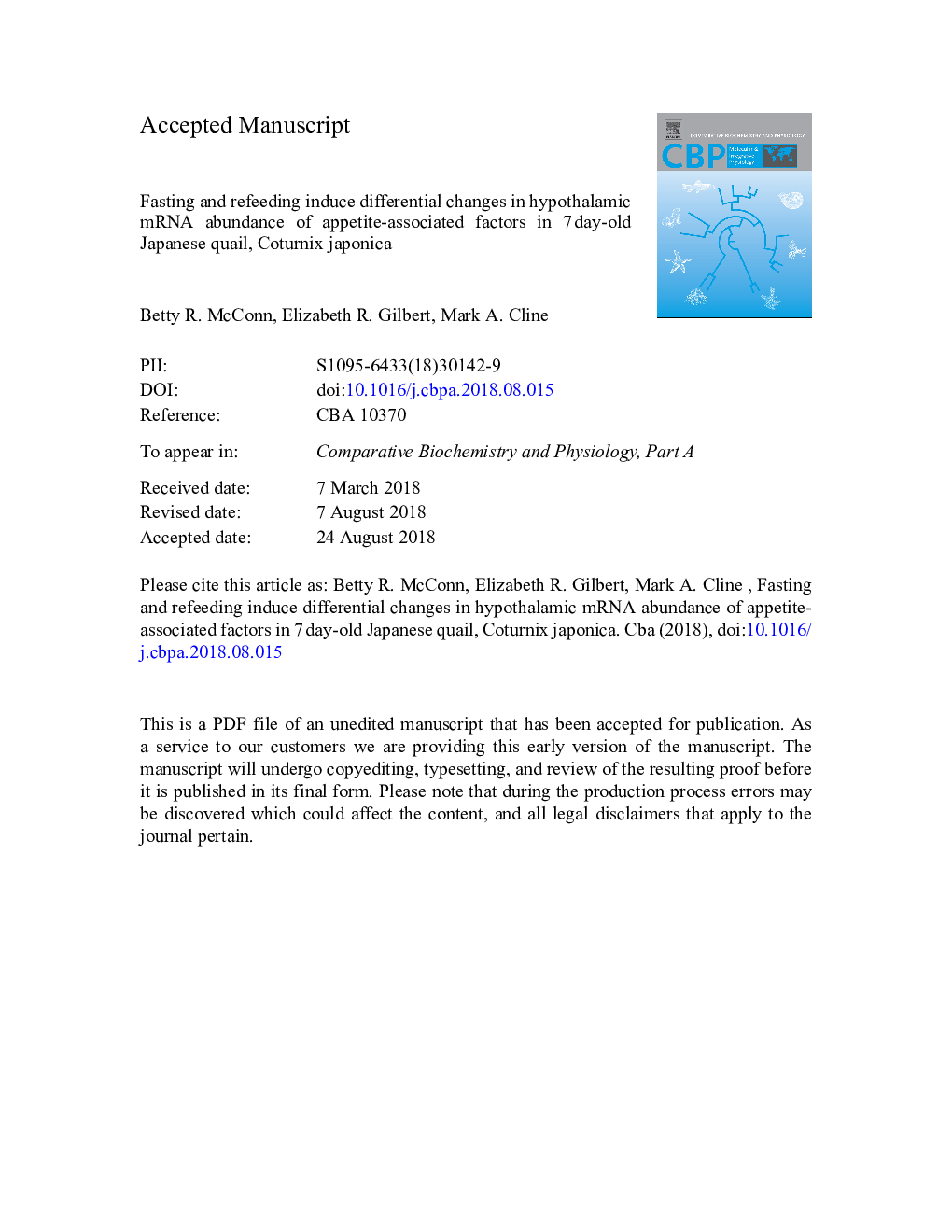| Article ID | Journal | Published Year | Pages | File Type |
|---|---|---|---|---|
| 11026094 | Comparative Biochemistry and Physiology Part A: Molecular & Integrative Physiology | 2019 | 23 Pages |
Abstract
There is little information regarding effects of fasting on feeding behavior and hypothalamic physiology in young Japanese quail. The aim was thus to measure food intake and hypothalamic mRNA in response to fasting and refeeding. Five d-old quail ate little during the dark cycle. Food intake was greatest during the first 2â¯h of the light cycle. Six day-old quail fasted for 6â¯h ate the most during the first 15â¯min of refeeding. In 7 d-old quail, 3â¯h of fasting up-regulated hypothalamic neuropeptide Y (NPY), NPY receptor sub-type 2 (NPYR2), agouti-related peptide (AgRP), orexin receptor 2 (ORXR2), melanocortin receptors 3 and 4 (MC3R and MC4R, respectively), and neuropeptide S (NPS) and decreased corticotropin-releasing factor receptor sub-type 1 (CRFR1) mRNA. Quail fasted for 3â¯h and refed for 1â¯h had greater NPY, AgRP, POMC, and MC3R but less CRFR1 mRNA than fed quail. Quail fasted for 6â¯h expressed more NPY, NPYR1, NPYR2, and MC3R and less ORXR2, prolactin releasing peptide (PrRP), cocaine- and amphetamine-regulated transcript (CART), and calcitonin (CAL) mRNA than fed quail. Quail fasted for 6â¯h and refed for 1â¯h expressed more NPY, NPYR1, NPYR2, AgRP, MC3R, MC4R, and NPS and less galanin, ORXR2, PrRP, CART, and CAL mRNA than fed birds. Hence, fasting induced changes in hypothalamic mRNA, with the largest changes occurring in genes associated with NPY and melanocortin signaling. Most genes remained elevated or downregulated after refeeding, suggesting that there was a time lag for transcription to respond to compensatory feeding.
Related Topics
Life Sciences
Biochemistry, Genetics and Molecular Biology
Biochemistry
Authors
Betty R. McConn, Elizabeth R. Gilbert, Mark A. Cline,
